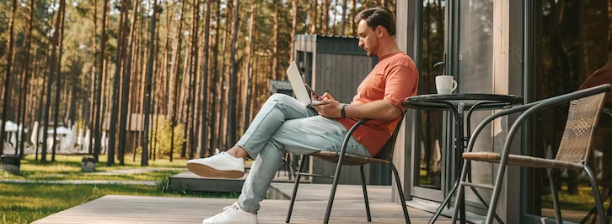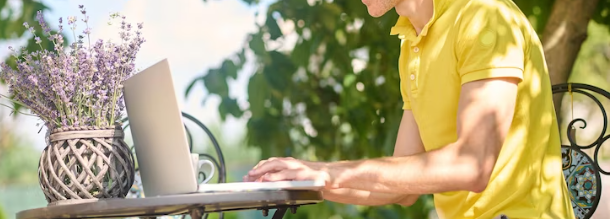Landscaping is an important aspect of creating an outdoor space that is both beautiful and functional. Whether you are looking to improve the curb appeal of your home, create a relaxing outdoor living area, or simply make the most of your outdoor space, there are many things you can do to achieve your goals.
From choosing the right plants and materials to creating a cohesive design that reflects your personal style, the key to success is taking the time to plan and execute your landscaping project with care. In this article, we will discuss the best tips for landscaping your outdoor space and help you create the outdoor oasis of your dreams.
From understanding your local climate and soil conditions to incorporating hardscaping elements such as patios, walkways, and retaining walls, there is a wealth of information and inspiration to help you get started.
Whether you are a seasoned gardener or a beginner looking to try something new, the tips and ideas in this article are sure to help you create a beautiful and functional outdoor space that you can enjoy for years to come.
I. Plan Your Space
Landscaping is an important aspect of designing and creating an outdoor space that is not only aesthetically pleasing, but also functional and practical. With the right approach and a bit of creativity, you can transform your outdoor space into a beautiful, relaxing, and inviting place to spend time.
However, before you start digging and planting, it’s important to plan and assess your outdoor space to ensure the best results.
Planning is the first and most crucial step in landscaping your outdoor space. It allows you to take stock of the existing landscape and determine what changes are necessary to create the look and feel you want.
Before you start, consider the size of your outdoor space and take note of any existing features such as trees, shrubs, walkways, and other structures. This information will help you create a plan that works best for your space and your needs.
Next, it’s important to assess the amount of sunlight and shade that your outdoor space receives. This will determine which plants will thrive and grow well in your garden. Take note of any areas that receive full sun, partial sun, or full shade, and plan your garden accordingly.
For example, if you have an area that receives full sun, you might consider planting drought-resistant plants that are well-suited to this type of environment.
In addition to assessing the size and features of your outdoor space, you’ll also want to consider the climate and soil conditions. This will help you determine which plants will grow well in your area, and what type of soil you need to provide them with the right nutrients and moisture.
For example, if you live in a dry area, you might consider planting drought-tolerant plants and adding compost to your soil to help retain moisture.
Once you have assessed your outdoor space and determined your needs, it’s time to start sketching out your design. This can be done by hand or with the help of landscape design software. The goal is to create a visual representation of your outdoor space and the changes you want to make.
This will help you make decisions about the placement of plants, the creation of walkways and other structures, and the overall look and feel of your outdoor space.
With these tips in mind, you’ll be well on your way to creating the outdoor space of your dreams. Whether you’re starting from scratch or simply making a few changes to an existing landscape, the key is to start with a plan, assess your outdoor space, and be creative.
With the right approach and a bit of patience, you’ll be able to create an outdoor space that is not only beautiful, but also functional and practical, providing you with a relaxing and inviting place to spend time with family and friends.
II. Choose the Right Plants
Landscaping your outdoor space can be a fun and rewarding project that can greatly enhance the look and feel of your home. One of the most important aspects of landscaping is selecting the right plants for your space. There are many factors to consider when selecting plants, including the climate, soil type, and amount of sunlight in your area.
By taking these factors into consideration, you can ensure that you choose plants that will thrive in your space and provide you with a beautiful and sustainable landscape for years to come.
Climate is an important factor to consider when selecting plants for your landscape. Different plants have different requirements for temperature and humidity, so it is important to choose plants that are well-suited to the climate in your area.
For example, if you live in a hot and dry climate, you may want to consider selecting drought-resistant plants that can handle these conditions. On the other hand, if you live in a humid and rainy climate, you may want to choose plants that are more tolerant of these conditions.
Soil type is another important factor to consider when selecting plants for your landscape. Different plants have different requirements for soil type, so it is important to choose plants that are well-suited to the soil in your area.
For example, some plants prefer well-drained soil, while others prefer soil that retains moisture. If you are not sure about the type of soil in your area, you can take a soil sample to your local nursery or gardening center for analysis.
Amount of sunlight is another key factor to consider when selecting plants for your landscape. Different plants have different requirements for sunlight, so it is important to choose plants that are well-suited to the amount of sunlight in your area. For example, some plants prefer full sun, while others prefer partial shade.
It is important to carefully consider the amount of sunlight in your space and choose plants that will thrive in these conditions.
When selecting plants for your landscape, it is also important to consider the different types of plants available. Some of the most popular types of plants for landscaping include perennials, annuals, shrubs, and trees. Perennials are plants that come back year after year, providing a continuous source of color and interest in your landscape.
Annuals are plants that last for one growing season, providing a quick and easy way to add color to your landscape. Shrubs are larger plants that provide structure and stability to your landscape, while trees add height and shade.
By taking the time to carefully select the right plants for your space, you can create a beautiful and sustainable landscape that will provide you with years of enjoyment.
Whether you are a seasoned gardener or a beginner, taking the time to choose the right plants for your space is an important step in creating a beautiful and functional outdoor space.
III. Add Hardscaping Eléments 
The addition of hardscaping elements can bring a whole new level of style and functionality to your outdoor space. Hardscaping refers to the use of non-living materials, such as stone, concrete, and wood, to create structures within your landscape.
These elements can include walkways, patios, retaining walls, and more. Not only do they add visual interest to your landscape, but they can also serve practical purposes, such as reducing erosion, providing a space for outdoor entertaining, and defining different areas within your yard.
When choosing hardscaping elements for your outdoor space, it’s important to select materials that will complement your existing landscape and design style. For a natural look, consider using stone or rock in shades that match your surrounding environment.
If you have a modern or contemporary design style, consider using concrete or other sleek materials. In addition, think about the function of each hardscaping element and choose materials that are durable and weather-resistant to ensure they will last for years to come.
One of the most popular hardscaping elements is a walkway. Not only does a walkway add a functional element to your landscape, but it can also serve as a decorative feature, leading the eye through your yard and highlighting different areas.
When choosing materials for your walkway, consider the overall look you want to achieve. If you want a natural look, consider using flagstone or pavers in earthy shades. If you want a more modern look, consider using concrete or bricks.
Another popular hardscaping element is a patio. A patio provides a space for outdoor entertaining, relaxing, and dining. When choosing materials for your patio, consider the size of your space, the amount of sunlight it receives, and your budget.
For a natural look, consider using flagstone or cobblestone. For a more modern look, consider using concrete or pavers.
Retaining walls are another important hardscaping element that can be used to reduce erosion, create level areas in a sloped yard, or simply add visual interest to your landscape. Retaining walls can be made from a variety of materials, including stone, brick, and concrete.
Consider the overall look of your landscape when choosing materials for your retaining wall. For a natural look, consider using natural stone in shades that match your environment. For a more modern look, consider using concrete blocks or poured concrete.
In conclusion, the addition of hardscaping elements can bring a whole new level of style and functionality to your outdoor space.
When choosing hardscaping elements, consider the existing landscape and design style, the function of each element, and the durability and weather-resistance of the materials. Whether you opt for a natural or modern look, hardscaping elements are sure to add visual interest and functionality to your outdoor space.
IV. Incorporate Lighting
Lighting is an often-overlooked aspect of landscaping, but it can make a significant impact on the overall look and feel of your outdoor space. From accentuating the beauty of your plants and hardscaping elements to creating a cozy and inviting atmosphere, lighting has the power to transform your yard into a true oasis
One of the biggest benefits of landscape lighting is that it adds depth and dimension to your yard after the sun sets. Whether you want to highlight a specific feature or create a warm and inviting atmosphere, lighting can help you achieve the desired look and feel.
Additionally, lighting can be used to create safety and security in your outdoor space by illuminating dark areas, such as pathways and entryways. This can be especially important for homes with young children or elderly residents.
When choosing the right lighting for your space, it’s important to consider the different types of lighting available. Ambient lighting provides a general, overall light and is typically used to create a warm and cozy atmosphere.
This type of lighting can be achieved with low-level lighting, such as lanterns or string lights, or with downlights that wash light across large areas of your yard. Accent lighting is used to highlight specific features, such as plants, sculptures, or hardscaping elements, and is usually brighter and more focused.
Task lighting, on the other hand, is designed to help you perform specific tasks, such as grilling or reading outside.
When positioning your lighting, it’s important to consider both form and function. For example, you might place task lighting near outdoor dining areas or outdoor kitchens, while accent lighting might be positioned to highlight a beautiful flower bed or architectural feature.
Additionally, you’ll want to consider the direction of light and how it will affect the look and feel of your space. For example, uplighting can create a dramatic effect by illuminating trees and other vertical elements, while downlighting can be used to wash light across large areas of your yard.
Another important consideration when incorporating lighting into your landscape design is the type of lighting source you choose.
LED lighting has become increasingly popular in recent years due to its energy efficiency, low maintenance, and long lifespan. Additionally, LED lighting can be easily integrated into your existing landscape design, and is available in a wide range of colors and styles.
Solar lighting is another popular option for those who want to reduce their environmental impact, as it harnesses the power of the sun to light your yard.
In conclusion, lighting is an essential aspect of any successful landscape design, and can help you create a warm, inviting, and safe outdoor space. From choosing the right type of lighting to positioning it for optimal impact, there are many factors to consider when incorporating lighting into your yard.
By considering these factors and choosing the right lighting for your space, you can transform your yard into a beautiful and functional outdoor oasis.
V. Maintenance and Care
Lighting is an essential element in creating a cozy and inviting atmosphere in your living room. The right lighting can set the mood, enhance the colors of your decor, and create a warm and welcoming environment.
One of the most important aspects of lighting in your living room is creating a warm and inviting atmosphere. Warm lighting, such as that created by incandescent or LED bulbs, can help to create a cozy and inviting atmosphere in your living room.
This type of lighting is ideal for creating a warm and welcoming environment and can help to set the mood for relaxing and unwinding.
Another key aspect of lighting in your living room is the type of lighting you choose. There are several different types of lighting available for your living room, including overhead lighting, task lighting, accent lighting, and table lamps. Each type of lighting serves a different purpose and can impact the overall feel of your living room.
Overhead lighting, such as a ceiling fan with a built-in light, is a great way to provide overall lighting in your living room. This type of lighting can help to create a warm and inviting atmosphere by casting a soft and even light throughout the room.
Task lighting, such as a desk lamp or reading lamp, is ideal for specific activities, such as reading or working on a project. This type of lighting can be positioned to provide direct lighting where you need it, making it ideal for tasks that require focused light.
Accent lighting, such as wall sconces or recessed lighting, is a great way to add visual interest to your living room. This type of lighting can be used to highlight specific areas or objects, such as artwork or plants, and can help to create a warm and inviting atmosphere by casting a soft and warm light.
Table lamps are another type of lighting that can be used to create a warm and inviting atmosphere in your living room. Table lamps come in a variety of styles and sizes, and can be positioned to provide focused lighting for specific tasks, such as reading or working on a project.
In addition to the type of lighting, the position of your lighting is also important. The right placement of your lighting can help to create a warm and inviting atmosphere in your living room. For example, placing table lamps on side tables or positioning wall sconces near seating areas can help to create a warm and welcoming environment.
The brightness and color temperature of your lighting can also impact the overall feel of your living room. Bright and cool lighting, such as that created by fluorescent bulbs, can create a sterile and uninviting atmosphere in your living room.
On the other hand, warm and dim lighting can help to create a cozy and inviting atmosphere, making it ideal for relaxing and unwinding.
In conclusion, lighting is an essential element in creating a cozy and inviting atmosphere in your living room. By choosing the right type of lighting, positioning it correctly, and selecting the right brightness and color temperature, you can create a warm and welcoming environment in your living room.
Whether you’re looking to create a cozy and intimate atmosphere or a bright and cheerful space, the right lighting can help to set the mood and create the perfect environment for relaxing and unwinding.
Conclusion
In conclusion, landscaping your outdoor space can transform it into a beautiful and functional area for you and your family to enjoy. Whether you’re looking to create a relaxing outdoor retreat or a functional space for entertaining, the right landscaping can help to achieve your goals.
By considering factors such as your budget, the size of your outdoor space, and your personal style, you can create a custom outdoor living area that meets your specific needs and preferences. From adding plants and flowers, to incorporating outdoor furniture and lighting, the possibilities for landscaping your outdoor space are endless.
So, take the time to plan your outdoor space, choose the right materials and elements, and enjoy the beauty and benefits of a well-landscaped outdoor area.



